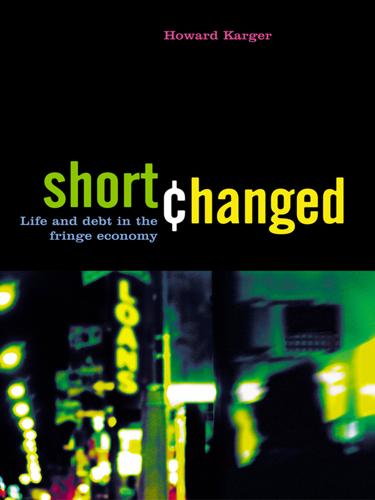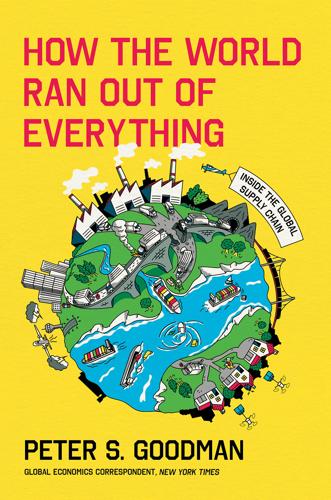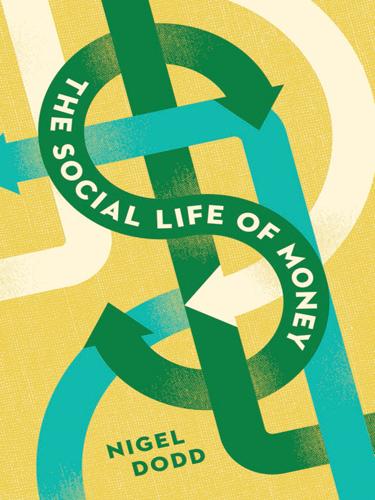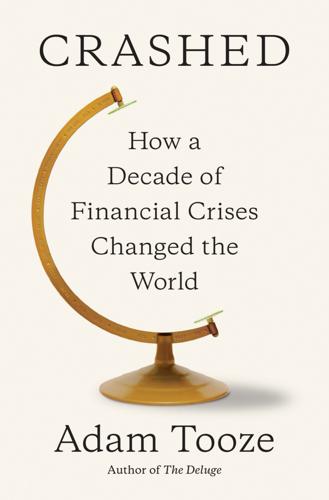
Shortchanged: Life and Debt in the Fringe Economy
by
Howard Karger
Published 9 Sep 2005
A final goal was to show how the modern fringe economy reflects a break from the past. The availability of high-cost predatory credit is hardly a new phenomenon in the United States. On the contrary, the nation has a long history of indentured servants, debt servitude, company stores, loan sharks, pawnshops, and predatory finance companies. For example, company stores in mill towns, coalfields, and migrant camps have traditionally kept poor workers in a cycle of perpetual debt. Black sharecroppers were held in debt servitude to landowners by land and crop mortgages carrying exorbitant interest rates.2 What makes the modern fringe economy different is the level of organization, the corporate control, the presumed legitimacy of these enterprises, the growing appeal to large sectors of middle-income households, and the geographic reach of these companies.

How the World Ran Out of Everything
by
Peter S. Goodman
Published 11 Jun 2024
That number reflected many factors—the grueling nature of the work, the difficulties of balancing family responsibilities, and disillusionment as visions of open road adventures succumbed to the grim monotony of warehouses, truck stops, and portable toilets. But the high turnover also attested to the predatory financing that was central to the trucking game, from the training program rip-off that Jackson suffered to commonplace arrangements in which trucking firms leased and sold rigs to drivers at rates of interest that could make a loan shark blush. “Many of the workers6 who try out trucking every year do so under a modern form of debt peonage,” wrote Steve Viscelli, a labor expert at the University of Pennsylvania, and himself a former truck driver.

Why We Can't Afford the Rich
by
Andrew Sayer
Published 6 Nov 2014
All this has happened in piecemeal fashion – again with no conspiracy or central organisation. At first it all looked unproblematic, in fact, the sector boomed: deregulation appeared to work. There were a few crises, but nothing to come close to 2007. The impressive expansion of the sector’s revenue seemed to justify everything. In the US, Michael Hudson comments, Predatory finance has concentrated wealth and used it to buy control of governments and their regulatory agencies. It even has taken over the Justice Department and the courts, so that financial fraud in America has been decriminalized. Bank lobbyists back the campaigns of politicians committed to deregulating banking and its major clients (real estate, natural resources and monopolies).

Adaptive Markets: Financial Evolution at the Speed of Thought
by
Andrew W. Lo
Published 3 Apr 2017
Someone who believes that fairness is the highest moral value will want to choose a vocation where they can exercise this value, perhaps as a public defender, a teacher of underprivileged children, or a sports referee. Those who believe, instead, that fairness is an unimportant value might find themselves drawn to the prosecutorial side of the law, or high-pressure sales, or indeed, Gordon Gekko’s caricature of predatory finance. Not everyone in those professions will share those values, of course, but individuals with those values may find such professions more agreeable than others, and as a result will be overrepresented within them. The Adaptive Markets Hypothesis implies that a culture isn’t only an innate outcome of its members’ tendencies.

The Social Life of Money
by
Nigel Dodd
Published 14 May 2014
Meanwhile, the Fed faces an interest rate quandary: if it keeps rates low, the financial sector will be forced to gamble to achieve the growth in asset values it needs; if rates rise, real estate values will fall and the banks and pension funds will be forced even further into negative equity. If Hudson is right, we ought to be witnessing the end of two myths. The first is about free markets. We cannot continue to believe that they are free when they support rent seeking rather than real GDP, reward banks for pushing junk mortgages, and use credit rating agencies to make predatory finance look like sound wealth creation. Free markets need to be protected from fraud and rent seeking. The second myth is that central banks cause inflation by monetizing public spending. They do not cause inflation if the spending in question goes toward new production and employment. Instead, such spending is being diverted to support inflated asset prices and continued financial speculation.

Crashed: How a Decade of Financial Crises Changed the World
by
Adam Tooze
Published 31 Jul 2018
They were left behind in a city that was literally falling into ruin, burdened with debts running into the tens of billions of dollars. With most of the major factories that had made it one of the industrial heartlands of the world closed down, Detroit was caught in a death spiral of unemployment, racial disadvantage and unsafe and predatory financing.2 By 2013, 36 percent of Detroit’s population were classed as living below Michigan’s far from generous poverty line. The unemployment rate was 18 percent. The city was an extreme example of the doom loop in which public and private financial distress compounded each other. In 2005, of all the mortgages in Detroit, 68 percent were subprime.3 As the crisis cut a swath across America, 65,000 homes in Detroit were foreclosed.